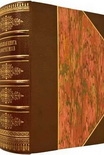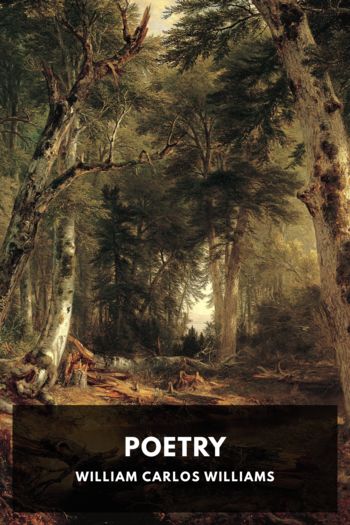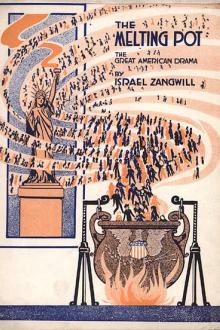No Modernism Without Lesbians, Diana Souhami [love books to read txt] 📗

- Author: Diana Souhami
Book online «No Modernism Without Lesbians, Diana Souhami [love books to read txt] 📗». Author Diana Souhami
Its international focus gave Sergei Eisenstein and other Soviet and eastern film-makers a voice in the west and it became a forum for discussion of film technique. Its originality was on a par with the innovative literary magazines. There were articles on the educational use of film and on technical innovation, there were reviews of films and of books dealing with cinema. Forty or fifty photographs were included in each issue. ‘We do not issue “gossip articles”’, subscribers were told.
The first issue sold out in a month and was enthusiastically reviewed. Close Up reflected the excitement of new ways of seeing, and of how film as a medium could be used. Bryher and Macpherson encouraged experimental cinema. The intention was for each issue to deal with a different theme: ‘the Negro attitude and problem’, ‘the Far East and its relation to cinema’.
Topics ranged wide: the hazards of film-making, social injustice, gender, problems of light and sound, the insularity of England, repressive methods of education, the nascent art or science of psychoanalysis. Macpherson hoped for public showings of experimental films in Paris and London and that ‘people making films and experimenting in all sorts of ways shall be able to see what others are doing in the same way’.
Friends contributed. H.D., in the first issue, had an article on ‘Cinema and the Classics’ and a poem, ‘Projector’, in which she praised the art of cinema as a ‘redemptive light’ and criticized the overuse of spectacle. Over the magazine’s six-year life span, she wrote eleven reviews.
Bryher wrote about Joyless Street, and how Pabst, through the interlocking lives of the inhabitants of a single street, reflected the economic depression and brutality of Vienna after the First World War. She told of how he made the film in thirty-four days, how on one occasion the crew worked for thirty-six hours without anyone leaving the set, how in Germany censors tried to ban it, and Pabst could not get Greta Garbo work in Europe after it, so she went reluctantly to Hollywood.
Sergei Eisenstein, in a piece called ‘A Statement on Sound’, warned of ‘the silent thing that has learned to talk’ and how sound, as a new montage element working with visual images, might destroy the purity of those images.
Upton Sinclair wrote of the film Thunder Over Mexico, based on Eisenstein’s ¡Que Viva México!. Eisenstein had shot 285,000 feet of film in Mexico and this was shipped to Hollywood, but he was then banished from the United States so could not edit the film himself and no film studio would take it on. Sinclair was said to have massacred Eisenstein’s work by using only 2 per cent of his footage.
Nancy Cunard, who was in a relationship with Henry Crowder, the African-American jazz musician, wrote about the Scottsboro Trial of nine black boys, the youngest thirteen, falsely accused in Alabama of gang-raping two white American women on a train in 1931. Through her Hours Press, which she set up in her Normandy farmhouse, she presented a petition to the Governor, demanding their ‘unconditional and immediate release’.
Hanns Sachs wrote of how witch hunts had evolved to demonize women who failed to be docile and subservient housewives.
Marianne Moore wrote enthusiastically about a twenty-seven-minute film, Lot in Sodom, which premiered at the Little Carnegie Theatre in New York on Christmas Day 1933:
a chill passed over me as the blood wandered down the torso of the prostrate body, and I thought the use of slow motion and distortion, the Blake designs in the fire, and the Pascin, Giotto and El Greco effects, wonderful.
Though familiar names contributed, Bryher was emphatic that her new venture should not be linked in any way with Contact Editions or Robert McAlmon. She turned down a contribution from William Carlos Williams because he remained a friend of McAlmon’s and had worked with him.
Graham Greene, as a cinema reviewer in the 1920s, read Close Up with much enthusiasm. He saw in film a new art, with images as formal in design as in painting, but where this design moved. He too initially thought the introduction of sound a reduction, a dilution. Film, when he came to write novels, influenced his imagination and perception.
Bryher invited Dorothy Richardson to contribute. She thought her name, as an experimental writer, would indicate to Close Up’s readership the kind of artistic endeavour the magazine wanted to promote. Dorothy Richardson, at first reluctant, suggested other writers who might know more about film but then capitulated and wrote a piece on how sound spoiled movies.
Gertrude Stein wrote a ‘phylo-scenic aria’ rather akin to the poem she wrote to promote interest in Sylvia Beach’s bookshop.
Foothills and Berlin
In 1928, POOL Productions made their second film, Foothills. Bryher, H.D. and Kenneth acted in it. H.D. described, or half-described, the plot as:
a dame from the city [Jess played by H.D.] comes to the country village for rest… There are all the complications of village life and gossip and a sort of idealistic encounter with the young intelligent lout [Jean played by Kenneth] in Vaudois farm clothes.
More formally, Kenneth Macpherson said of the film and himself:
This is a four-reel film experimentally made in a small studio arranged and equipped by the author of the scenario, who also directed, part-photographed and part-played in the production. Unlike most of the One-Man films made to date, it does not attempt abstractions, freak effects or incoherency, but is a simple story simply told of life in a small Swiss village.
The locations are genuine beauty spots of Switzerland, none of the artistes are professionals, one of the roles is actually played by a Swiss peasant. The season is Spring when the hills are covered knee-high with wild flowers and the trees are all in blossom against snow capped mountains.
They all had fun. Making an experimental film seemed as free





Comments (0)